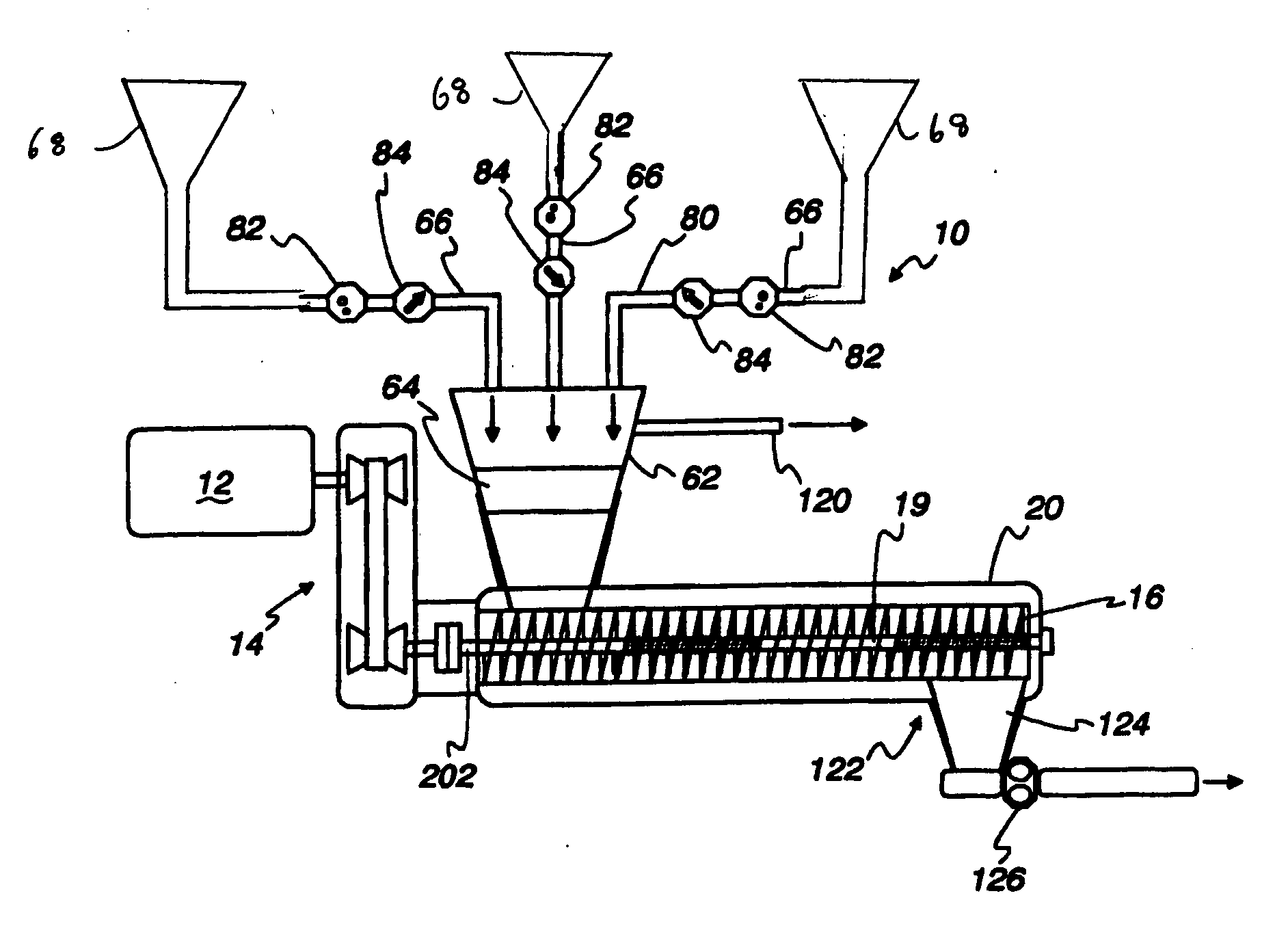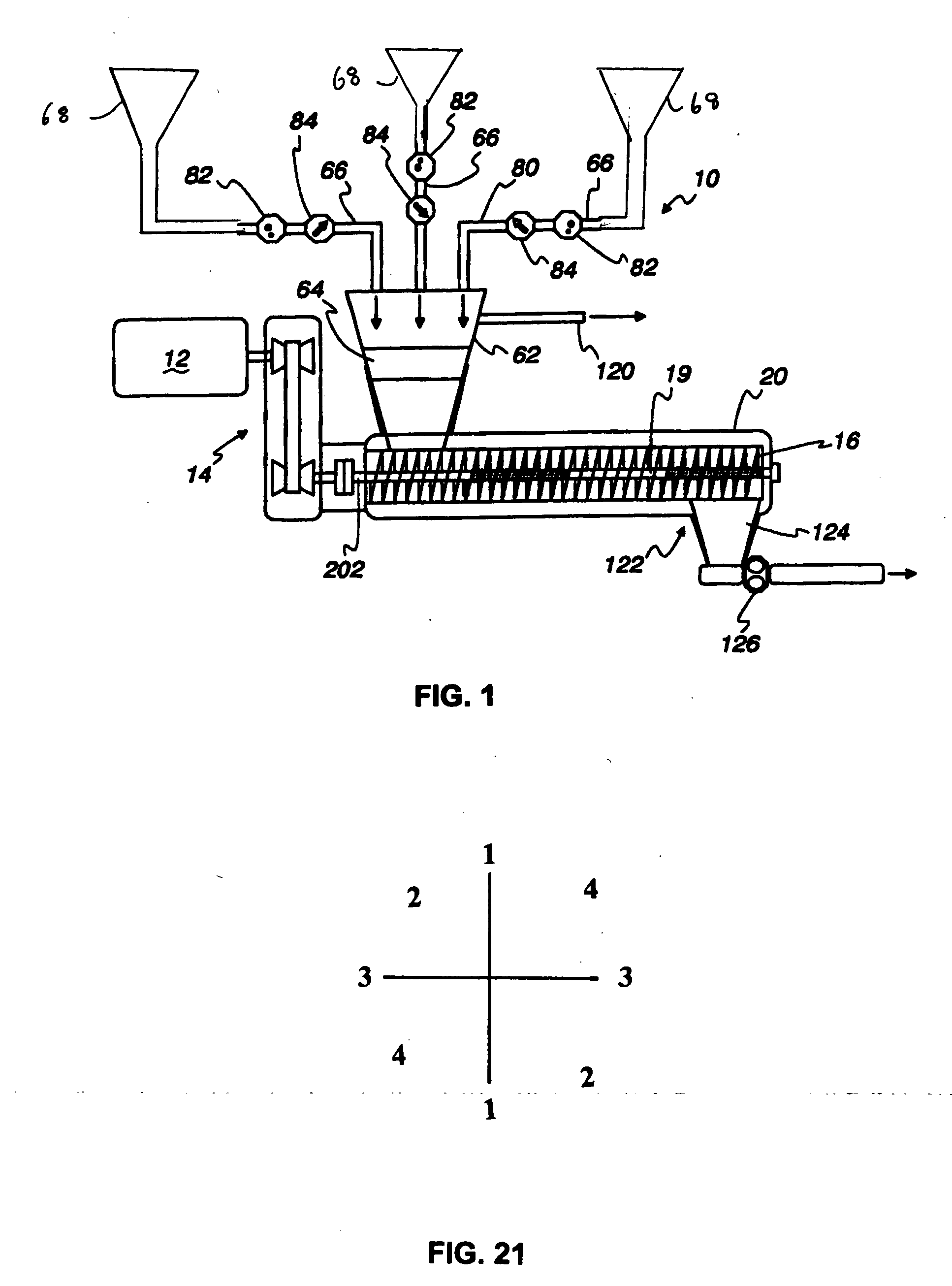Method and apparatus for meat product manufacturing
a technology for meat products and processing methods, applied in the direction of meat mixing apparatus, application, transportation and packaging, etc., can solve the problems of excessive loss of water or fat in the final product, yield loss, and inability to maintain sufficient integrity over the desired shelf life, so as to reduce the necessary number of components, improve processing time, and eliminate the effect of delays
- Summary
- Abstract
- Description
- Claims
- Application Information
AI Technical Summary
Benefits of technology
Problems solved by technology
Method used
Image
Examples
Embodiment Construction
[0049] Referring initially to FIG. 1, apparatus for making processed meat products in accordance with an embodiment of the invention is shown diagramatically at 10. The illustrated apparatus comprises a motor 12 and a belt drive 14 transmitting power to one or more mixing devices 16 located in a housing 20. Ingredients such as chunks or pieces of meat, one or more salt solutions, water, flavorings such as spices, and preservatives are input through input lines, including pumps 84, directly into the housing 20. The input line pumps 84 and mixing devices advance the mixture through the housing while the mixing device applies a high shear rate to the mixture to achieve rapid protein extraction from the meat components. The mixing devices are preferably made of stainless steel or another material that is wear resistant and suitable for contact with food product components.
[0050] While a single elongated screw as shown in FIG. 1 may be employed as a mixing device in some embodiments, ot...
PUM
 Login to View More
Login to View More Abstract
Description
Claims
Application Information
 Login to View More
Login to View More - R&D
- Intellectual Property
- Life Sciences
- Materials
- Tech Scout
- Unparalleled Data Quality
- Higher Quality Content
- 60% Fewer Hallucinations
Browse by: Latest US Patents, China's latest patents, Technical Efficacy Thesaurus, Application Domain, Technology Topic, Popular Technical Reports.
© 2025 PatSnap. All rights reserved.Legal|Privacy policy|Modern Slavery Act Transparency Statement|Sitemap|About US| Contact US: help@patsnap.com



